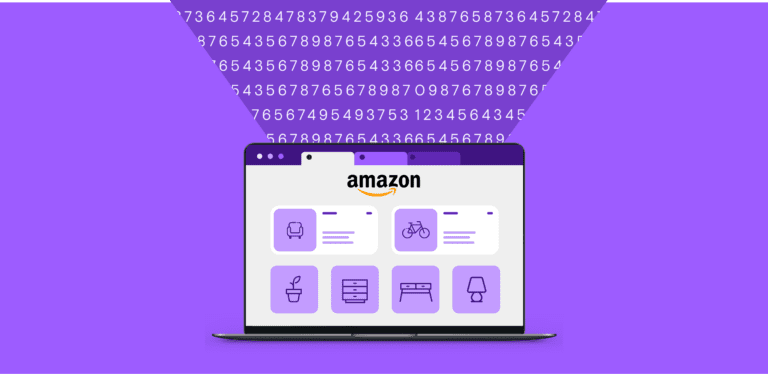Amazon's market share is expected to reach 50% by the end of 2024. It collects around 1 exabyte of purchase history data from their consumer base. And they use Big Data technology to optimize your experience, their supply chain and more.
Amazon’s market share is expected to reach 50% by the end of 2024. It collects around 1 exabyte of purchase history data from their consumer base. And they use Big Data technology to optimize your experience, their supply chain and more.
The Relationship Between Big Data and Amazon
When you go to buy something online, chances are you are buying from Amazon. The company is among the leading e-Commerce platforms. Their market share came in at around 47% in 2020 and rose to 50% by the end of 2021. Amazon built its company off of the ‘everything under one roof’ model. They offer everything from online shopping, Amazon Pay, Amazon Pantry, Amazon Web Services, and so much more.
With so many options for consumers it can be easy to be overwhelmed with all the products and services. How can consumers find anything when tasked with combing through millions of products? The answer is Big Data. Amazon leverages consumer data to drive sales, personalize product feeds, and implement dynamic pricing.
How Much Data Does Amazon Collect?
In order for Amazon to make data driven decisions, they have to collect it first. All in all, Amazon collects around 1 exabyte of purchase history data from their consumer base. To put it in perspective, 1 exabyte is only about 10,000 miles short of reaching the moon. They have a wide pool to collect from considering that Amazon Web Store fields about 1.1 million requests a second. Still, purchasing information isn’t the only type of data they collect.
What Type of Data Does Amazon Collect?
In broad terms, Amazon gathers consumer information from three main places. First, the data you provide when you use it’s services. Second, the data it finds automatically. This can be information about your phone type, location, etc. Lastly, it gathers information from third parties. This is anything like credit checks, purchase info, and returns.
While these are the general methods, there are more nitty gritty details about data collection laid out in Amazon’s 4,400+ word privacy notice. It notes that Amazon may automatically collect your IP address, login credentials, computer location and errors when logging in. Beyond this, Amazon can also collect your app preferences, cookie details, and URLs that you click. It even knows if you hover over a product, when you scroll, and when you click.
Why Does Amazon Collect Personal Data?
The point of all this data collection is simple. It’s to sell you more things. Amazon puts your personal information to work to personalize your product feed. On a larger scale, it uses this info to get a general picture of shopping trends, top sellers, and consumer behavior. This data is working for them. The Amazon Web Store represented around $13 billion of the total $21 billion in revenue brought in my Amazon in 2020.
How Amazon Collects Data
- Personalized Recommendation System
- Anticipatory Shipping Model
- Alexa
- One-Click Ordering
- Book Recommendations from Kindle Highlighting
So, Amazon has the data, but how did they get it? The reason why they are the leaders in storing, processing, and implementing data is because they have some of the most effective data collection programs. Moreover, the company uses predictive analytics for targeted marketing. This in turn, increases customer satisfaction and boosts consumer loyalty. Here is how they do it:
1. Personalized Recommendation System
Amazon pioneered the use of a specific software to tailor personalized recommendations to consumers. It is called the Collaborative Filtering Engine (CFE). The company generally adheres to the principles of behavioral analytics. And it drives 35% of annual sales for the Amazon Web Store. As a system, the CFE works by analyzing the purchasing patterns of customers from recent buys, wishlist items, and shopping cart saves. It also pulls information from products that have been reviewed and rated by the consumer as well as their most searched products. All of this information trains the CFE algorithm to make better predictions about user likes and dislikes. It will even recommend additional and relevant purchases to customers. For example, if you buy a dog leash, it might recommend a collar or dog tag.
2. Anticipatory Shipping Model
We all know Amazon is notorious for it’s speedy delivery times. Now, Amazon customers can get same day delivery shipped to their door in as fast as five hours. This is made possible through Amazon’s licensed anticipatory delivery model. Essentially Amazon utilizes consumer data to predict what they are going to buy and when. They then estimate when they will require them. The predicted items then get shipped to a stockroom determined by consumer location so they will be ready to fly out of the door when a user orders them.
3. Alexa
While Alexa is the classic virtual assistant, Amazon also offers additional virtual assistants such as the Echo and Echo Show. All of these products include speakers and/or a camera. These are used for several purposes like getting weather alerts, news updates, or even ordering cat food. This is all a simple voice command away. Still, what many of us don’t realize is that our voice commands are being recorded. These audio recordings are taken in and uploaded to Amazon’s servers. The explanation from Amazon is that it helps train speech recognition to be more effective. However, for many customers this quickly becomes a privacy concern. Amazon stores the order information and uses it to predict future purchases for that specific user. These will then be suggested on the Echo home screen.
4. One-Click Ordering
There are millions of alternatives out there to Amazon and the company knows this. With all that competition, Amazon needs a competitive strategy to keep consumers on their platform. This is why they started using One-Click ordering. This is a patented feature that allows customers to automatically purchase anything without having to constantly enter shipping and billing information.
Here is how it works: the feature is enabled when a user places their first order and enters their shipping and payment info. If they choose One-Click ordering, then they have 30 minutes to decide on a purchase in the future. After that, the product is automatically charged and shipped based on the user info.
5. Book Recommendations from Kindle Highlighting
When Amazon acquired Goodreads in 2013 they brought over a social networking service with over 25 million users. They merged their Kindle platform with this audience and rolled out all new features to help merge their products. After the purchase users could highlight words and share them with others. Amazon saw a data gold mine. They began monitoring highlighted words in the Kindle app. This way Kindle started gathering more information about the interest of the readers. In turn, this data was further used to recommend ebooks to their customers.
How Amazon Uses Big Data
- Supply Chain Optimization
- Price Optimization
- Additional Purchases Per Order
- To Keep You Scrolling
For companies like Amazon and so many others, the amount of data collected on a regular basis is massive. In order to manage and process large quantities of data, Amazon leverages Big Data technology to do the work for them. Essentially, Big Data is the large-scale collection of information used for analytics and insights. Big Data collects every click, like, comment, and transaction. It is what allowed an entire industry to be built on massive stores of information.
1. Supply Chain Optimization
To maximize efficiency, Amazon employs Supply Chain Optimization. In order to fulfill orders quickly, Amazon connects with manufacturers and uses data to track their inventories. They also use Big data to locate the closest warehouse to a customer to reduce the overall shipping costs.
2. Price Optimization
Amazon changes their prices an average of 2.5 million times a day. The main reason for this is because Big Data platforms assess a person’s willingness to buy a product. The goal is to set prices according to a user’s activity on the website, competitors’ pricing, product availability, expected profit margin, and more. Prices change about every ten minutes as Big Data processes and updates costs. In total it has boosted Amazon’s profits by 25%.
3. Additional Purchases Per Order
Big Data is the main driver of Amazon’s product recommendations but it also serves to collect insights. They put these to work by predicting what users will want to buy as add-ons to their current purchases. It encourages customers to make impulse purchases and of course make Amazon more money.
4. To Keep You Scrolling
At the end of the day, Amazon wants more than your money, they want your attention. Putting Big Data to work means Amazon can serve you content to keep you engaged on the platform. Using purchasing history, what you click on, and reviews, Amazon puts together a personalized product feed for their users. The goal of serving you personalized recommendations is to increase the odds that you will buy a product or engage with content. They do this across all of their products. From the Amazon Web Store to Prime Video, the longer they can keep your attention, the more money they can make. Plain and simple.
Training Big Data
Amazon would not exist without Big data. The truth is that Amazon is not only one of the largest corporations in the world, they are also one of the largest data companies. Whenever you use Amazon, they are collecting tons of your personal information behind the scenes. They do this often through veiled privacy practices and worse without you knowing.
When you like, click, scroll, and save on Amazon.com or any website for that matter you train Big Tech’s algorithms to learn more about you. They use this information in tandem with Big Data analytics to serve you more content and make more money. You put the work into your data only to line Big Tech’s pockets.
Companies like Amazon continue to earn and leave users behind. Invisibly wants to flip the script and empower users with their data. Your data is valuable and you are giving it away for free when you could be earning with it.
Invisibly is a platform that allows you to maximize the value of your data and earn brand rewards for it. The data collected is the data you decide to share – putting you in direct control, always. Connect your bank or credit card account(s), take surveys, and earn points to unlock your rewards from brand partners including Target, Ulta Beauty, Best Buy, and many more.

Invisibly
See your data work for you.
